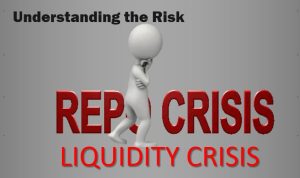Repo Crisis for Year-End
The Repo Crisis for year-end has had the Fed pumping in a staggering amount of about $234 billion into the repo markets. They are exchanging high-quality capital for cash to suppress market volatility and maintain the central bank’s overnight funds level, which is used as a benchmark for multiple other short-term interest rates within a range of 1.5%-1.75%. People who fail to understand this institutional market keep thinking it is quantitative easing. With inflation low and unemployment back at 1960s levels, there is no reason for quantitative easing to support the economy. Instead, the Fed is trying to maintain control over short-term rates for the free market is pushing higher. This means the actions of the Fed are an attempt to PREVENT the rise in interest rates, not to stimulate the economy.
On Monday alone, the Fed injected another $18.65 billion for a two-day repo operation and $30.8 billion in a one-day offering. However, both issues were undersubscribed which is confirming that there has been a lot of book-squaring going into year-end. This has been reflected in currency markets as short positions were being closed out in thin trading in the euro for example.

